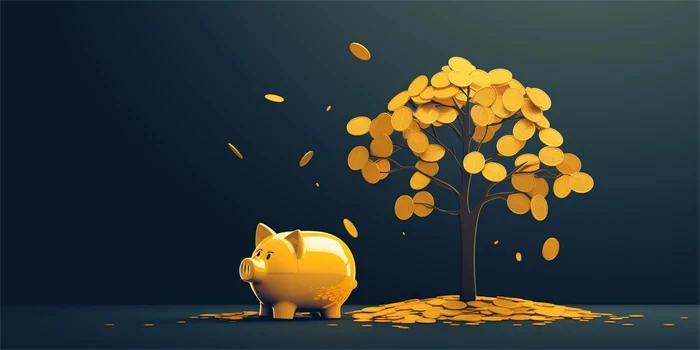Pokemon Go took the world by storm when it was released in 2016, captivating millions of players around the globe. But while players were busy catching virtual creatures, the creators of the game were devising various money-making strategies. In this article, we will unravel the intricate web of Pokemon Go’s revenue generation methods, exploring how the game capitalizes on engagement, partnerships, and in-app purchases to create a profitable venture.

1. In-app Purchases: A Trainer’s Delight
One of the primary sources of revenue for Pokemon Go comes from in-app purchases. Players can buy items like Poke Balls, Incense, and Lucky Eggs to enhance their gameplay experience. These purchases not only provide players with a sense of progression but also contribute to the game’s financial success. By enticing players with exclusive and valuable items, the game encourages them to spend real money to gain a competitive edge.
Furthermore, Pokemon Go offers players the option to purchase additional storage space for their Pokemon collection, allowing them to catch more creatures without having to release their beloved companions. This feature not only adds convenience but also acts as an attractive revenue stream.
2. Sponsored PokeStops: A Win-Win Situation
Pokemon Go cleverly capitalizes on its massive user base by partnering with various businesses and organizations. These partnerships allow businesses to become sponsored PokeStops or Gyms, drawing players to their physical locations. In return, Pokemon Go earns a significant amount of revenue from these partnerships. Sponsored locations often provide players with unique in-game rewards or bonuses, creating a win-win situation for both players and businesses.
By partnering with real-world establishments, such as restaurants, cafes, or retail stores, Pokemon Go not only increases its revenue but also enhances the overall gameplay experience. These sponsored locations often become hotspots for players, promoting social interaction and generating foot traffic for the partnering businesses.
3. PokeCoin Currency: The Game’s Financial Backbone
Pokemon Go utilizes its virtual currency called PokeCoins as a key element of its money-making strategy. Players can acquire PokeCoins through in-app purchases or by completing certain objectives in the game. These coins can then be used to buy premium items or to speed up gameplay progression.
By introducing this virtual currency, Pokemon Go creates a sense of exclusivity and scarcity, motivating players to spend real money on in-app purchases to acquire more PokeCoins. This strategy not only drives revenue but also fosters a competitive environment within the game.
4. Raid Passes: Encouraging Cooperation and Spending
Raid Battles are a prominent feature in Pokemon Go, requiring players to team up with others to defeat powerful Pokemon. To participate in these raids, players need Raid Passes, which can be obtained for free or purchased using real money.
This strategy encourages players to cooperate, fostering a sense of community within the game. Additionally, the limited availability of free raid passes motivates players to consider purchasing them, further boosting the game’s revenue.
5. Seasonal Events: Limited-Time Excitement
Pokemon Go keeps players engaged and generates excitement through seasonal events. These events often introduce exclusive Pokemon, special bonuses, or increased spawn rates, creating a sense of urgency among players to participate.
By capitalizing on the fear of missing out, Pokemon Go encourages players to invest more time and effort into the game, resulting in increased engagement and potential in-app purchases. These events serve as a catalyst for revenue generation while keeping players entertained and eager for the next surprise.
6. Sponsored Augmented Reality Features
Pokemon Go’s augmented reality (AR) technology opens up opportunities for partnerships and sponsorships. The game has collaborated with various brands and franchises to introduce themed AR experiences, allowing players to interact with their favorite characters or products.
These partnerships, often implemented through limited-time features or events, create a sense of novelty and excitement among players. By offering exclusive AR experiences, Pokemon Go reinforces its brand partnerships while providing an additional revenue stream.
7. In-Game Advertising: Seamlessly Integrated
Another way Pokemon Go monetizes its immense player base is through in-game advertising. The game subtly integrates ads that promote various products or services, ranging from movies and TV shows to sponsored events or campaigns.
Although the introduction of ads was met with some resistance, Pokemon Go successfully strikes a balance between generating revenue and maintaining a positive player experience. By carefully selecting relevant and non-intrusive ads, the game utilizes advertising opportunities without disrupting gameplay or overwhelming players.
8. Research and Special Research Tasks
Pokemon Go incorporates research tasks and special research quests as a means to engage players and drive in-app purchases. These tasks often require players to complete specific objectives, such as catching certain types of Pokemon or participating in battles.
Completing research tasks rewards players with valuable items, rare Pokemon encounters, or even exclusive events. By providing a sense of accomplishment and offering unique rewards, Pokemon Go compels players to actively participate in these tasks, ultimately contributing to its revenue generation.
9. Premium Membership Plans
Pokemon Go recently introduced premium membership plans, offering additional benefits to subscribed players. These plans, such as Pokemon Go Plus, provide players with exclusive bonuses, increased rewards, and early access to certain features.
The introduction of premium memberships not only enhances the gameplay experience for subscribed players but also adds a new revenue stream for Pokemon Go. By offering enticing perks and rewards, the game appeals to players looking for enhanced gameplay opportunities.
10. Collaborations with Other Franchises
Pokemon Go has successfully collaborated with other popular franchises to create synergistic partnerships. These collaborations introduce themed events, quests, or augmented reality experiences featuring characters and elements from well-known franchises.
Partnerships with franchises like Harry Potter, Minecraft, or Mario Kart not only attract players from those fan bases but also generate additional revenue through increased in-app purchases and sponsored events. By tapping into the existing fan bases of these franchises, Pokemon Go expands its reach and profitability.
Overall, Pokemon Go’s money-making strategies revolve around engaging players, forming partnerships, and providing a seamless in-app purchasing experience. By capitalizing on the game’s immense popularity and continuously introducing new features, Pokemon Go remains a lucrative venture for its creators and an exciting adventure for players.
Frequently Asked Questions:
- Are in-app purchases necessary to enjoy Pokemon Go?
- Can I earn PokeCoins without making in-app purchases?
- How often do seasonal events occur in Pokemon Go?
- Do sponsored PokeStops provide any additional benefits?
- Are premium membership plans required to enjoy all features of Pokemon Go?
No, in-app purchases are optional. While they may enhance the gameplay experience, Pokemon Go can be enjoyed without spending real money.
Yes, PokeCoins can be obtained by completing certain objectives in the game, such as defending Gyms or participating in research tasks. In-app purchases provide a quicker way to acquire PokeCoins.
Seasonal events in Pokemon Go occur multiple times throughout the year, usually coinciding with real-world holidays or special occasions.
Yes, sponsored PokeStops often offer exclusive in-game rewards, bonuses, or special items that are not available at regular PokeStops.
No, premium membership plans are optional. They provide additional benefits and bonuses, but all core features of the game are available to all players, regardless of their subscription status.
References:
- “Pokemon Go Revenue & Usage Statistics (2021)” – BusinessofApps
- “Pokemon Go Reveals New Premium Membership Plan” – CNET
- “How Pokemon Go Continues to Make Money” – Investopedia








